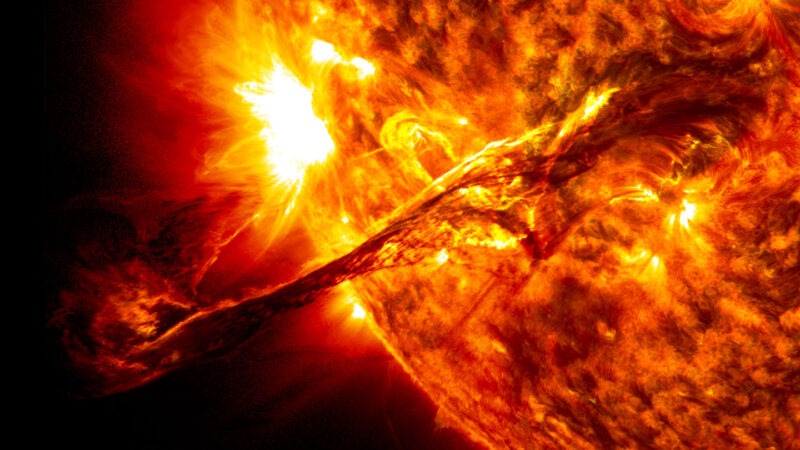Solar cycle (noun, “SOHL-err SY-kuhl”)
The solar cycle is a roughly 11-year cycle in the sun’s activity. At the start of each cycle, the sun’s activity is low. It’s at a so-called “solar minimum.” Over an average four years, the sun’s activity rises to a “solar maximum.” Over another seven years or so, it quiets back down to a solar minimum.
The sun goes through this cycle because of its magnetic field. Sort of like a giant bar magnet, the sun has a huge magnetic field with a North and South Pole. But the sun’s magnetic field is very messy. It’s always stretching and twisting. This happens due to the churning of hot plasma inside the star. As a result, the sun’s magnetic field completely flips every 11 years or so. Its North Pole becomes its South Pole, and vice versa. That drastic change affects the activity on the sun’s surface.
Near the solar maximum, the sun has more sunspots. These are dark splotches on the sun with especially strong magnetism. A solar maximum also tends to come with more eruptions on the sun’s surface called solar flares. And it usually brings more coronal mass ejections, or CMEs. These are huge plumes of hot, magnetized plasma that get blasted away from the sun into space. Both solar flares and coronal mass ejections can affect technology on Earth — interfering with satellite signals, causing power outages and more.
But the solar maximum isn’t all bad news. It’s also an exciting time for sun-related science. The upcoming April 8 total solar eclipse will happen near the sun’s solar maximum. This will make the eclipse a great opportunity to see lots of activity in the sun’s outer atmosphere — and maybe even a dramatic coronal mass ejection.
In a sentence
Neptune’s weather seems to shift along with the solar cycle.





